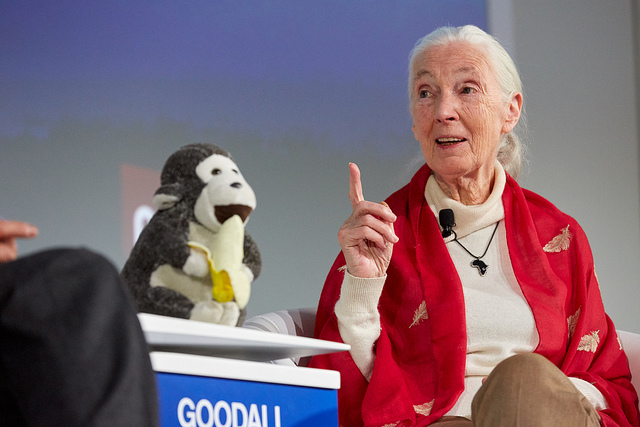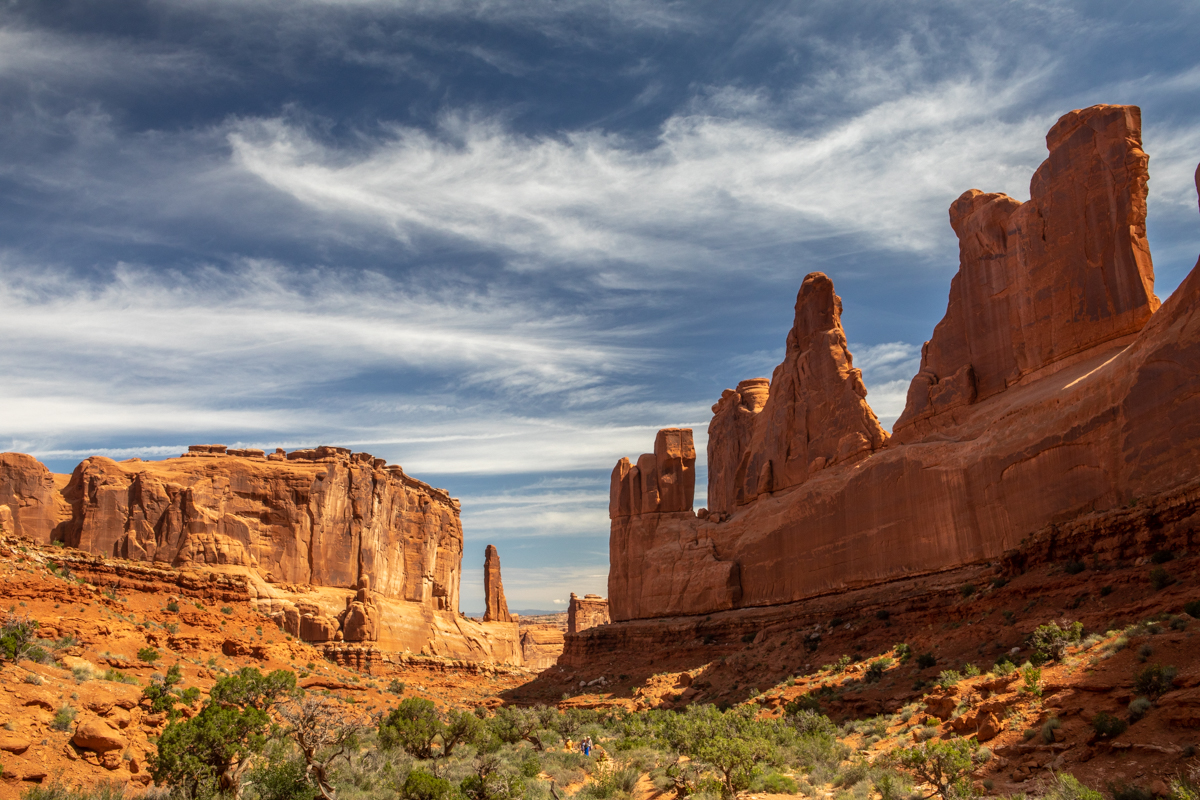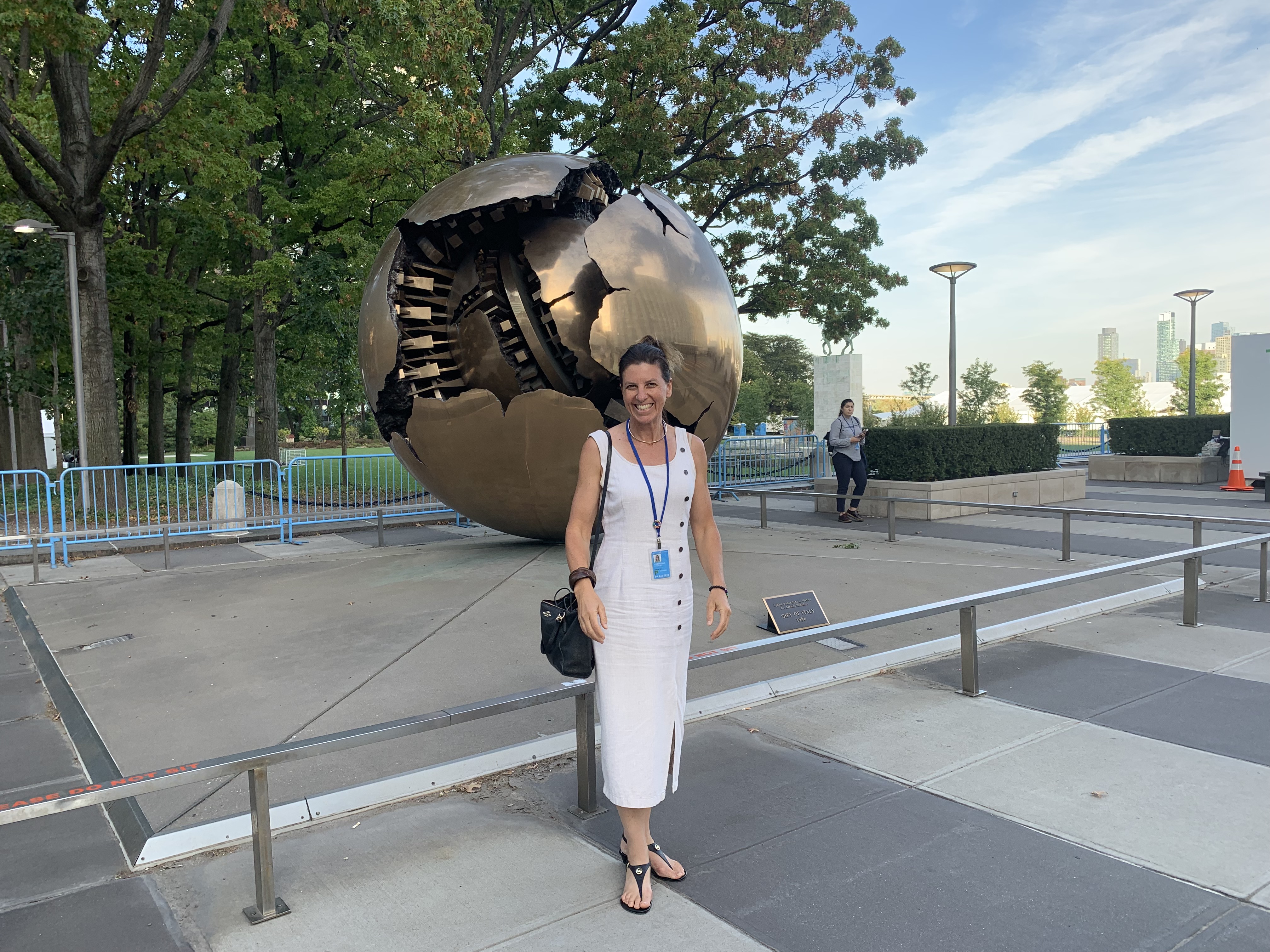Our Nature Reality: Current State of the Biosphere
The Biosphere Under Stress
Every ecosystem on earth is under stress and individual species are adapting, migrating, or disappearing… permanently. The WWF 2018 Living Planet Report shows that the size of vertebrate populations across the Earth has declined by 60% on average (1970-2014). The Living Planet Index, which synthesizes trends in vertebrate populations, shows species declining rapidly since 1970, with reductions of 40% for terrestrial species, 84% for freshwater species and 35% for marine species. What’s happening to our Garden of Eden? Where have all the flowers, plants, and animals gone?
Could this rapid extinction happening be our true, albeit grave present reality? Have we finally as a living biosphere arrived at earth’s ecological cliff? And if our species is fundamentally responsible for this ecological demise, then what are we going to do to course correct? Will we jump over the edge of the cliff or join efforts to build a bridge and walk into a new, regenerated earth paradigm, together? Will we risk our Garden of Eden–our comfortable, stable climate, and bring an end to the Holocene that has been defined by abundant biodiversity and life? Have we already committed ourselves to transitioning out of the Holocene and into the Anthropocene– an epoch defined, driven, and determined by our one species, Homo sapiens (wise ones)? What will our human-divined epoch look like? What legacy will we live out and leave to the 3.8 billion year, ever-evolving, living history of the biosphere upon which we live and with which we are a part? Will we calibrate and design our future human civilization to be in symbiosis and right balance with our fellow citizens and our fellow creatures? Are we aware that we are dependent upon one another and a healthy, regenerating natural environment for the survival of all living species, as well as our own? Have we already crossed a planetary threshold– reached critical tipping points, triggering earth systems to accelerate positive feedback loops (e.g. melting sea ice, permafrost thaw, destabilized forests) that now irreversibly, symptomatically, and without sympathy, are now automatically causing our earth’s operating system to drive in a different bio-physical, climate direction?

To Be A Cautious Optimist: Retro-Casting our Future toward 2030
The “Cautious Optimist” mindset–embraced by Christiana Figueres, is the right one. We can’t afford as a global society to glaze over nearly universal scientific observation of anomalous climate trends and degraded nature patterns, worldwide. We can’t afford to downplay the severity, scale, and systemic nature of our current ailing earth reality- no matter how scary. We certainly can’t afford to remain uninformed and non-critical of economic or political decisions affecting our home planet, to ignore or remain ignorant of the nature-climate reality showing up in fires, floods, droughts, or heat waves seemingly now ubiquitous around the world. We can’t afford to live another day without a sense of individual responsibility and recognition of our personal power to take action through our every action to make conscious choices in the way we eat, move, live, design our living-working spaces, and create our world. According to Peter Diamandis (co-author of Abundance), there has never been a better time in human history, where more individuals have had the power to influence the future, than now. If we can invent our future; if a positive mind produces positive outcomes; if we are naturally intelligently hardwired for cooperation and care of another (E.O.Wilson); and if our innovative, intelligent species is now in the ecological, evolutionary driver’s seat to manifest an extraordinary future that works for all life on earth; then WOW this next chapter of life on earth is going to be extraordinary.

If we want to live in an extraordinary future world, where energy is abundance and access is everywhere, then we have to retro-cast (c.f. Stephen Kutler, co-author of Abundance) back to our current reality today in 2020 and figure out what we must do now to create the world we want in 2030. If we want to live in a world—rich with biodiversity and healthy, thriving natural systems that serve to filter our air and clean our water, then we have to be honest with our current reality and figure out what we must do to create the world we want in 2030. If we want to live in an extraordinary future world, where the quality and energetic potential of our food and food harvesting/replenishing systems are optimized-where the quality of our thoughts and the capacity of our minds to learn and think critically and contribute our value to society is elevated- where the health and vitality of the human body is fully aligned with the health and vitality of the earth’s biosphere; then we have to design now our lifestyles in ways that support the revitalization of natural systems and recalibrate our human activity in harmony with nature’s laws and in accordance with living principles.

Our challenge is that the future we want is not yet here. We have a lot of work to do now in our current 2020 reality to realize the world we visualize in 2030. Further challenging, the world we know is changing at an exponentially faster rate than ever before. Our planetary scale influence on natural systems since the Industrial Revolution, which has degraded soils, displaced wildlife, decimated ecosystems, polluted our air and water, warmed our climate, and drew down our natural capital… continues to accelerate. As Dr. Foley, Director of Project Drawdown offered at the Planet Home event in San Francisco, we know where we can gain the greatest leverage to reduce our global carbon footprint and do a lot of social-environmental good in the process.

Simply, the first IPCCC report (1990) gave us a 350ppm (parts per million) carbon atmospheric budget to keep us living within Eden’s green garden. Scientists, world leaders, and citizen activists like Bill McKibben have kept to the 350ppm line. I remember in Poznan, Poland producing a 350.org short film with Bill. That was COP14 in 2008… We said then, we’re going to lose the coral reefs if we’re not careful. The ocean can’t absorb any more carbon. We can’t afford to lose any more of the world’s forests- our life support system. The real de-carbonization goal for earth’s thin, fragile atmosphere should actually be 325ppm. Now in 2019 (11 years later), we are already at 415 ppm… and earth’s blood pressure continues to rise.
What do we do?
First, everyone, everywhere is important, valuable, and required to show up to learn, to voice up to share, and to step up to act in ways that drives everyone, everywhere fast and furious toward our common, carbon neutral, zero waste, regenerative (circular) future-our most viable scenario. Second, everyone, everywhere is important.

“When you try to pick out anything by itself, we find it hitched to everything else in the Universe.” John Muir
We are part of the 3.8 billion years of life’s evolutionary journey on Planet Earth. We share the same genetic code and principles of life-the abilities to order, eat, work, grow, develop, respond, adapt, and reproduce like every other living being on Planet Earth. According to sustainable cities expert, Dickson Despommier, “We are same-same; but different…” not only connected through the exchange of energy-water-food, but interdependent on each other for our very being. EO Wilson’s Biophylia hypothesis-–our urge to connect with other forms of life (1984), Tom Lovejoy & Lee Hannah’s treatise on Climate and Biodiversity (2005), Jane Goodall’s life experience with the chimpanzees, Janine Benyus’ vision of biomimicry and commitment to nature-inspired design… and so many others…. point to the reality that every living being is important both as itself and in connection with the rest of life. Thus, our journey forward is not a solo adventure; but requires us to be collaborative explorers and settlers of our common future.

The good news is that this journey can be extraordinarily engaging, exciting, creative, imaginative, and collaborative… and the destination, auto-magical. Indeed, the best of our uber-social, altruistic humanity can now show up to design forward a new future for all- one action, one lifestyle change, and one personal commitment at a time… with our common goals in full focus and with fierce attention to monitoring, tracking, and quantifying the positive impact of those actions with right metrics.

Starting with Our Goals in Mind: What are our common climate goals?
According to the latest IPCCC Report 2018, we know that in the least, we must double-down on our carbon emissions in the next 12 years. This means we must produce 50% less carbon pollution than 50% of the atmospheric carbon by human activity by 2030 and move toward a 100% carbon neutral world by 2050. If we break down our climate solution pathway into keystones; then according to Dr. Foley and the dedicated research-science-communication team at Project Drawdown we must:
25%: Electrify our world. If 25% of carbon pollution is caused by hydrocarbons-coal, fossil fuel, natural gas; then we must rapidly shift to a world run on 100% renewable energy – sun, wind, waves, and water.
25%: Protect our forests, while feeding our people healthy and well. If forests and agricultural lands have the capacity to sink 24% of carbon in the atmosphere; and if deforestation, methane-production due to cattle, and over-use of fertilizers contributes 25% of the carbon pollution to the atmosphere; then we must value our forests standing (not cut for timber) and value our own health, moving toward a more vegetable-fruit-grain based diet.
50%: Re-design the infrastructure and metabolism of our cities. If transportation networks and flow, steel-cement-coal to build our buildings, and fluorinated gases to run our AC (air-conditioning) account for 40% of the carbon problem; then it’s time to re-design our urban landscapes with different, carbon neutral resources and natural flows of air, water, goods, people throughout the city.

The Exponential Climate Action Roadmap– spearheaded by Future Earth and promoted by Johan Rockstrom, Christiana Figueres takes us to the same destination to meet our Global Goal- Climate Action 13… and really most of the other UN Global Goals, also along the way.
That said, it is important to note that the Climate Action goal is conservative, according to the latest IPCCC report last year (2018) to keep our global climate below the 20C increase. As someone who has worked with the Global Climate Models (GCMs) producing future climate-environment scenarios during my PhD at ETHZ; I appreciate that these models are tools (usually very conservative tools) for ‘better” understanding very complex systems. For example, most GCM’s to date still don’t account for quiet sleeper drivers of carbon pollution, like permafrost melt, which could alter the actual climate response significantly. Thus, my perspective is that our 50% carbon reduction goal is absolute baseline. Rather, 100% carbon reduction with an additional ginger boost of positive carbon sinking in the ocean (currently responsible for absorbing 17% of carbon emissions) to lay the dinosaur fossil fuels to permanent rest is best. That’s our way forward….

Starting with Our Goals in Mind: What are our Common Nature Goals?
The New Global Deal for Nature concludes that we need to protect at least 30% of the Earth’s surface by 2030, and provide a framework for the distribution of this 30% across the most important areas for biodiversity. But that’s not enough. Given that terrestrial carbon sinks currently absorb a quarter of emissions, scientists conclude that if we want to remain below a 1.5°C warming scenario, we need to designate an additional 20% of land-based ecosystems as climate stabilization areas. (Global Deal for Nature, Science Advances, April 2019)
So, how do we do that?
First and foremost, we need to ensure the viability of 50% of the natural world in its regenerative, natural state by 2030. We need to expand our marine protected areas to 30% of the ocean area. Thanks to long efforts of passionate oceanographers, like Enric Sala (Explorer at National Geographic, NIW Interview); now 10% of the oceans are protected. We have 20% to go, to date. Further, coral reefs (50% reduced, worldwide) continue to decline and may disappear by 2050. (BBC Nature, Philippe Cousteau, Planet Home) So, re-seeding and restoring coral reef ecosystems in innovative, regenerative, and scalable ways becomes necessary now if we are to ensure the persistence of coral reefs for future generations. Thankfully, the $10 M Xprize for Coral Reef Restoration is now launched and in full force, seeking visioneers and solutionists.

We need to restore our world’s forests- tropical and temporal forests alike. Before the agricultural revolution, scientists estimate that there were 6 trillion living trees on earth; and now only 3 trillion, 40 billion trees remain standing. (Dickson Despommier, Columbia University) We have cut down 50% of the trees on our planet, and by doing so, have compromised our life support system. This year in the Amazonas alone, we reached a 20% reduction of tropical forests due to a combination of slash-burn agriculture, timber removal, and wildfire. (Victor Salviati, Sustainable Amazon Foundation) According to Tom Lovejoy, if we lose the integrity and inter-connectivity of 25% of our forest ecosystems, then we risk the ecological collapse of our world’s forests that harbor our terrestrial biological wealth, purify our water, and respire our every second breath (Science Advances, April 2019). On a positive note, it’s a great step in the right direction that world leaders in business and government are now looking to Nature-Based Solutions (NBS) to climate change (a Session at the UN Summit 2019) and viewing the 4000+ species of trees-collectively as the most ingenious carbon capture storage technology on the planet.
Biodiversity – the diversity within species, between species and of ecosystems – is declining faster than at any time in human history.
According to a shocking new report by the Intergovernmental Science-Policy Platform on Biodiversity and Ecosystem Services (IPBES), one million plant and animal species can disappear in the next few decades. The Biosphere is currently experiencing extinction rates of species this century 1000 times greater that natural rates. (IUCN)
The Living Planet Index that tracks more than 4000 endangered species across the globe also reports a 60% decline in species abundance since 1970. The IUCN for decades has used rigorous biological criteria to assess the risk-status for species and has been the world’s primary guide to biodiversity rise. They currently report a less extreme loss of wildlife that the IPBES, but still sobering tally as 28,000 species (27% of all IUCN-assessed species) are currently critically threatened with extinction. That’s the present statistic (updated July 25, 2019)
Have we already entered a period of mass extinction for plant and animal life in the biosphere? Is our generation bearing witness to the beginning of the Sixth Extinction… and the first known extinction event caused by a single species? Could the enemy poised in battle to destroy our own existence be ourselves? As I am now editing my book, Natural Intelligence by Design that I wrote a year ago, I have had to remove two critically endangered species in my iconic list of 365 species in my book, as they are now extinct…and last week National Geographic sent an alert that the last male Sumatran rhino in Malaysia died…Sadly, strangely, perhaps by the time I publish my book, I will have to edit out one or more, more. That we are experiencing this Sixth Extinction of Species worldwide… feels very real to me.
Thus, we need to bend the curve of biodiversity loss, again a rate of extinction, which has exponentially increased by 1000x in the past century. We need to respect planetary boundaries and reduce our carbon footprint by 50%, immediately-yesterday… while potentially growing 70% more food for the projected 9.8-11.6 billion people perhaps populating our planet in 2050… on 50% less land needed for ecosystem repair and the recovery of species.

The good news is that the future is ours to invent. The good news is that we are an innovative species with an innate propensity to solve problems. The good news is that we have a natural inclination to collaborate and to organize when we feel our family and community are threatened. (E.O. Wilson, Ants and Men) The good news is that more and more of us are waking up to our climate-nature reality, fearless in the face of global change…and as heroic warriors in multiple, small-large ways manifesting a new world…making new, better lifestyle choices… which in aggregate, generate positive ripples on a planetary scale… just in time because ecosystems are now dramatically changing, naturally responding on larger scales to our human choices and activities. It is time for us to be awake– very alert and very aware.

If you want to learn more about the author, Catherine Cunningham, and her creative work to awaken natural intelligence in the world, please visit Natural Intelligence Media.
Catherine’s Weekly Natural Intelligence Worldwide podcast with Eurovision News can be found HERE.
Catherine’s current book, Naturally Intelligent by Design can be found HERE.


